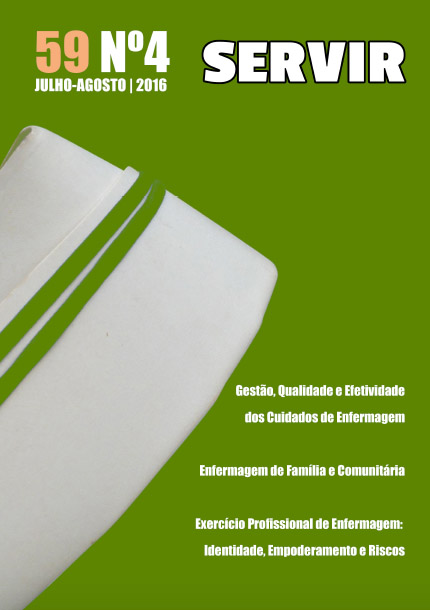Work environment in the working context of nurses from the ACES
DOI:
https://doi.org/10.48492/servir024.24025Keywords:
Work Environment, Primary Health Care, Central Health Care Unities Grouping, Health Units, NursesAbstract
INTRODUCTION
The work environment (WE), is considered a strategic management tool, is present in all organizations and it derives from interactions, interpretations and workers perceptions within these organizations and it is influenced by variables of context, structure and process. When the WE it is motivational and directed towards the organizational goals it influences the working efficacy.
OBJECTIVES
Determining the work environment between nursing staff of the X Central Health Care Unities Grouping (ACES X) and to identify the influence of social-demographic and professional factors in the work environment perception.
METHODS
Quantitative, analytical, descriptive and cross study, whose data collection was obtained by using an online questionnaire that was completed by 121 nurses in exercise response rate of 62.0%, in a mainly female sample (81.8%). This data collecting tool includes questions related to social, demographic, professional and organizational questions. The work environment evaluation was obtained using the Work Environment Scale (WES) , translated and adapted to the Portuguese population by Louro (1995)1.
RESULTS
The majority of the nurses has a degree in nursing (72,7%) and 24% have a master’s degree, with an average in years of nursing service of 18 years (SD=8,85). Of the sample 40,5% work in Personalized Health Care Units (UCSP), followed 37% in Family Health Units (USF). In general the highest percentage of nurses perceived the WE as very pleasant and pleasant 25,6% and 49,6% respectively, while 24,8% considers it as unpleasant.
Female nurses revealed a more positive perception of the WE versus men, (average = 63,96), with significant effect in the task-orientation, work pressure and innovation subscales. The WE perception was significantly influenced by the type of unity where the nurses work (χ2 =11,937; p=0,018), in which the UCC stood out for having a more pleasant perception of the WE (average= 82,41).
CONCLUSIONS
The study highlights the necessity of promoting a greater link between the several unities that make up the ACES, and the continuing consolidation of the CSP reform as a way to reduce the asymmetries felt by the nursing professionals of this Central Health Care Unities Grouping.
Downloads
References
Louro, C. (1995) Tradução e adaptação da Work Environment Scale (W.E.S.) à População Portuguesa. Lisboa: Instituto Superior de Psicologia Aplicada (Monografia de fim de curso).
Chiavenato, I. (1999) Recursos humanos: O capital humano das organizações (9ª Edição). Rio de Janeiro: Campus.
Neves, J. (2001) Clima e cultura organizacional. In Ferreira, J., Neves, J.; Caetano, A. Manual de Psicossociologia das Organizações. Lisboa: McGraw-Hill.
Ferreira, I. (2014) Relatório Género, trabalho e saúde em Portugal. Porto: Centro de Psicologia da Universidade do Porto.
Aliaga, S. L. et al., (1993) “Motivación laboral: Creación de círculos de calidad”. Revista Rol de Enfermería. Madrid. 176, pp. 33-38.
Kopelman, R. (1988) Administración de la productividad en las organizaciones. México: MacGraw-Hill.
Campos, A.C. (2006). Linhas de Acção Prioritária para o Desenvolvimento dos Cuidados de Saúde Primários. Lisboa: Missão para os Cuidados de Saúde Primários. Acedido em: https://www.sns.gov.pt/wp-content/uploads/2016/02/Linhas-de-Acao-Prioritaria-para-o-Desenvolvimento-dos-CSP.pdf
Moos, R & Insel, P.M. (1974). The Work Environment Scale. Palo Alto (Cal.): Consulting Psychologist Press Inc.
Chiang V.M., Núñez P.A., Martín M.J., Salazar B.M (2010). Compromiso del Trabajador hacia su Organización y la relación con el Clima Organizacional: Un Análisis de Género y Edad. Panorama socioeconómico 28(40), pp. 92-103
Downloads
Published
How to Cite
Issue
Section
License
In order to promote the free circulation of knowledge, Servir is open access journal. All its content is available and protected under the Creative Commons license (CC BY 4.0).
The journal allows self-archiving in institutional repositories of all versions, which may become immediately available


